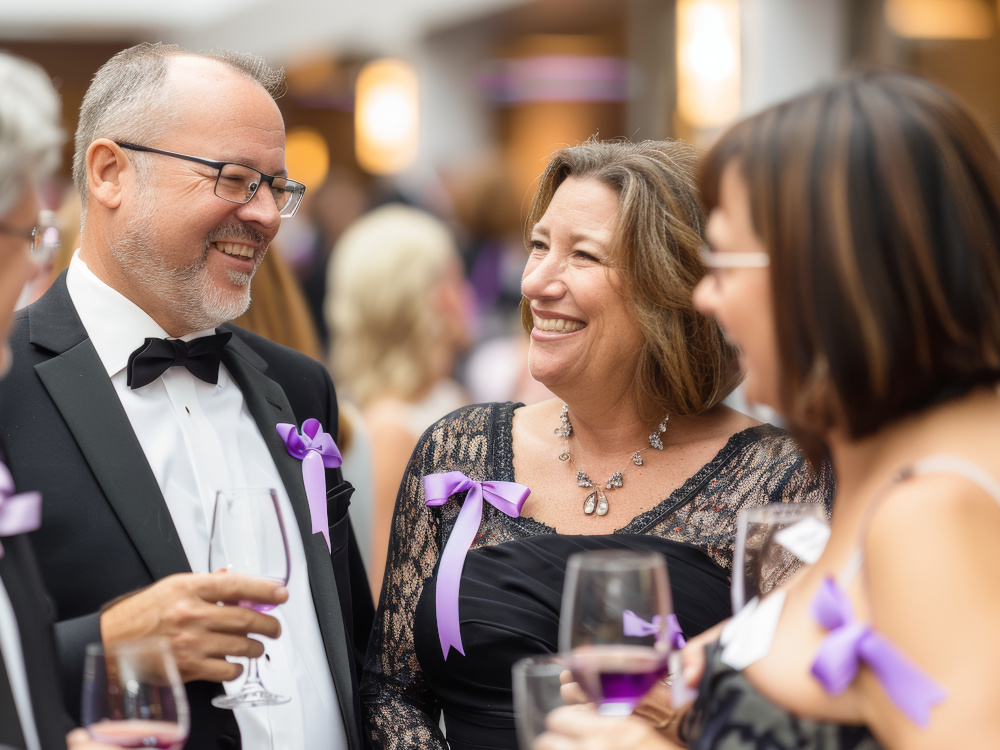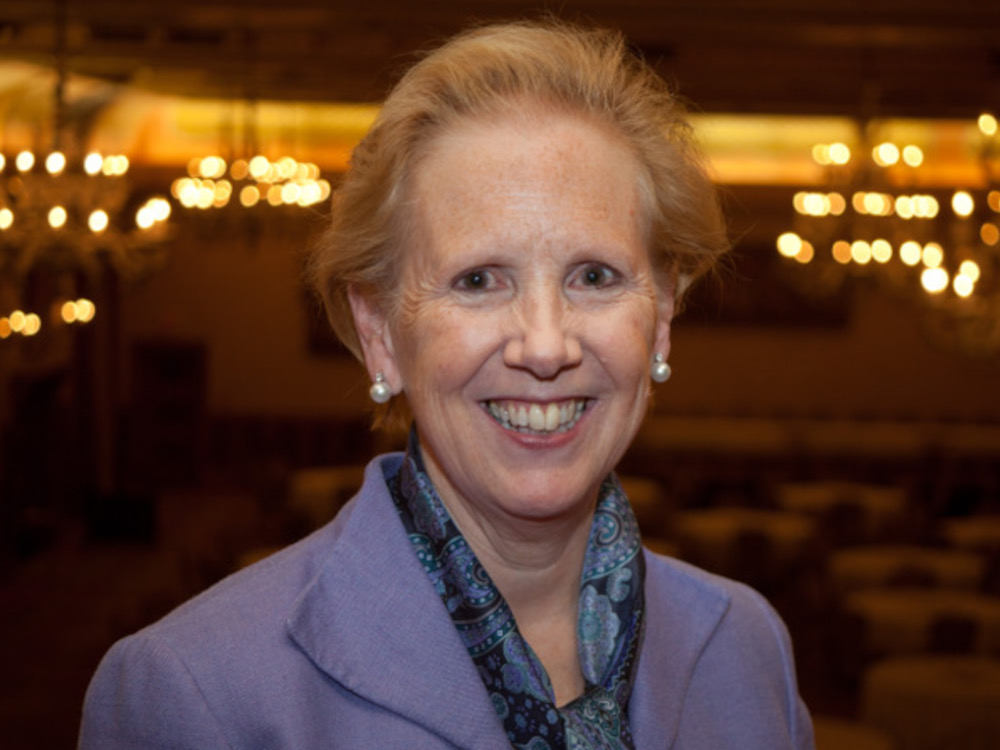Fifteen or so years ago, when Toronto’s glittering gala spring and holiday seasons seemed endless, I attended so many charity galas I liked to joke about starting Gala Gals, a rating agency to judge each event’s food (a.k.a. rubber chicken dinners), florals, entertainment and crowd appeal.

But then the pandemic, inflation and the rise of digital fundraising slowed gala invitations to a trickle.
This decrease has taken place amid a steady decline of charitable giving in Canada. According to the 2024 Canada Helps Giving Report, the number of Canadians making charitable donations decreased for the 11th consecutive year, down to 17.7 per cent from 23.4 per cent between 2010 and 2021. Coupled with pandemic-era shifts that permanently altered how charities engage donors, these statistics suggest a bleak outlook for traditional fundraising events.
And yet, some high-profile fundraisers still raise serious money. New York’s Met Gala, for instance, recently raised a staggering $31 million, the most in 77 years. Last year, Canada’s CANFAR gala, Bloor Street Entertains, raised $1.7 million in a single evening. In 2024, the David Foster Foundation (DFF), which raises funds for Canadian children who need organ transplants, held its biggest success to date, filling its coffers to the tune of $19 million—and without hosting a silent auction.
John Danson, DFF’s senior vice-president of fund development, who is turning 80 this year with retirement on the horizon, said DFF will hold its final large gala in 2026, in Victoria. After 46 years, it is returning to the home turf where it all began.
Danson acknowledges it is an anomaly in the fundraising world for an organization to raise 80 per cent of its annual revenue by relying on fewer than 200 people. He attributes the foundation’s success to a confluence of factors: the invitees, quality of the performers (past galas have featured big ticket celebrities including Oprah Winfrey, Lionel Richie, Michael Buble and Stevie Wonder), and its lean operation: It employs five staff members and has minimal admin costs. That said, “by far the most important factor is the cause,” says Danson.
Unless the cause is compelling, and near and dear to your heart, he questions how many people actually want to attend galas anymore, given the so-so food and wine and predictable formats, such as silent auctions. Nowadays, he said, people simply prefer to donate the money. Given how tough it is to raise money, a $5K showcase auction item isn’t going to cut it, especially if you need to raise enough to cover a $1 million operating budget each year. He suggests asking yourself how large you want to be, and how much money you need or want in order to accomplish everything you want to accomplish. Then aim for that number and think big.
It does seem that galas benefit only organizations with the budgets to dazzle. But we recently attended events held by two of the smaller charities that the Robert Kerr Foundation supports—the Jennifer Ashleigh Children’s Charity and Peacebuilders—and both attracted full houses. Such charities may raise modest sums compared with their bigger brethren, but for them, the proceeds provide a financial lifeline, and in some cases a substantial portion of their annual revenue. I do have one word of advice for any charity planning to host a gala, though: Don’t hold it on an NHL playoff night.
So, perhaps the gala isn’t exactly gone. Though 15 years ago every charity held a major event annually, the ones that still exist have become more the province of elite organizations that can afford to risk a substantial portion of their budget on one big blowout.
On to the next generation
Another thing to keep in mind is that these events tend to be attended by old-timers. Danson says most donors and event attendees are older than 50. Given that $1,000 to $25,000 is the new major gift fundraisers aim for, “when you’re fresh out of university, you don’t have the money or inclination to start giving, unless [a tradition of] giving is in your family.”
While we used to believe that philanthropy was an obligation, that attitude is dying, he says. “With the exception of SickKids and Free the Children when it was around, no charity is getting it right involving kids at a really young age to give or raise funds for charity.”
Philanthropy, like flossing or calling your grandparents, is best introduced early. Kids who engage in giving when they’re young are far more likely to carry those values into adulthood.
Another factor that comes into play here is that while fundraising used to involve networking with people with whom you had relationships, and was underpinned by the shared belief that everyone was duty-bound to give, it has largely become professionalized.
While relationship fundraising still exists, it’s no longer driven by that sense of obligation. Danson said he knows of a small charity with huge heavy hitters on the board, “and yet none of those board members fundraise for the charity,” whereas 20 or 30 years ago, they were expected to fundraise along with the executive director.
The data backs him up on the decline of relationship-based fundraising. Canadians are increasingly disconnected, our social networks have shrunk, and those of us with smaller social networks donate and volunteer less. From 2013 to 2022, the number of Canadians with six or more close friends declined by 40 per cent, and those who say they feel a very strong sense of belonging to their community dropped by 12 per cent. More than 80 per cent of those with many close friends donate, while just over half with very few do.
Embracing new approaches
Driven largely by the need to navigate economic realities and broaden their donor engagement especially among younger donors, charities are embracing new approaches. They’re diversifying channels, adopting innovative digital engagement methods, leveraging online platforms, running social media campaigns, abandoning direct-mail campaigns, pivoting to online fundraisers and employing AI-powered predictive analytics.
They’re also increasingly focusing on building and nurturing a sense of community and local engagement by hosting intimate, peer-to-peer events and community-centric initiatives to adapt to changing donor behaviours. In 2024, for instance, peer-to-peer (P2P) fundraising in Canada experienced a significant rebound, returning to more predictable pre-pandemic patterns. Programs such as the Terry Fox Run and the Princess Margaret Cancer Foundation’s Ride to Conquer Cancer saw substantial growth, with the latter increasing funds raised by $3.45 million. By cultivating a loyal donor base that feels personally connected to the cause, and fostering long-term donor relationships, they ensure sustained support.
One thing is clear: Whether you pine for the olden days of glitter and glitz, nostalgia won’t revive the galas of yesteryear. Charities will increasingly have to adapt quickly and creatively to connect with donors.
And the Gala Gals? We’ll have to pivot, too—though rating a virtual fundraiser’s chatroom vibe doesn’t offer quite the same sparkle.
Bri Trypuc is a Toronto-based independent philanthropy consultant. She is also the Executive Director of the Robert Kerr Foundation, a private foundation committed to addressing basic and urgent needs to improve the lives of children and the homeless. This piece was originally published in RKF’s monthly newsletter, The Slant.
Get our new quarterly newsletter about philanthropy: Canadian Family Offices’ new newsletter brings you key insights, trends and expert perspectives on charitable giving, tailored to Canada’s wealth leaders and giving communities. Click here to subscribe now to stay ahead.
Please visit here to see information about our standards of journalistic excellence.




